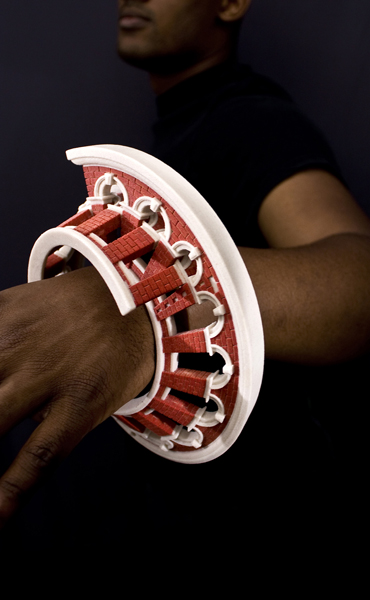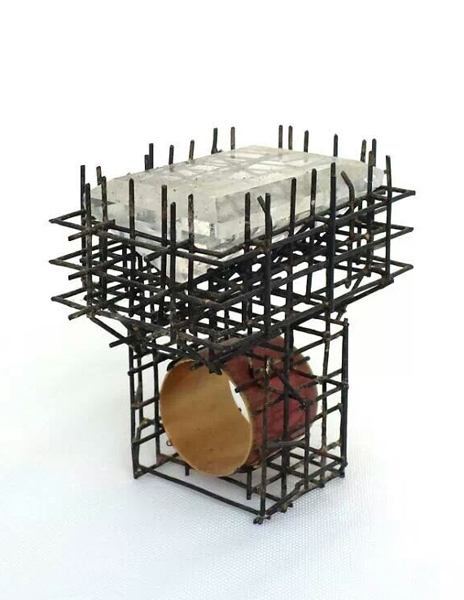
Olivia Shih: This project, Building Jewellery, intended to illustrate the relationship between architecture and contemporary jewelry. Can you discuss what that relationship is? What drew you to this particular topic?
Anna Cheng: Architecture is very close to me because of my previous profession as an interior architect. Since I started working in contemporary jewelry, I have noticed that there are many things in common between the two. To me, architecture is a way to perceive the world, and its concepts are not limited to building environments. I wanted to explore its concepts in contemporary jewelry and see how artists express elements of architecture in their work.

Olivia Shih: This project, Building Jewellery, intended to illustrate the relationship between architecture and contemporary jewelry. Can you discuss what that relationship is? What drew you to this particular topic?
Anna Cheng: Architecture is very close to me because of my previous profession as an interior architect. Since I started working in contemporary jewelry, I have noticed that there are many things in common between the two. To me, architecture is a way to perceive the world, and its concepts are not limited to building environments. I wanted to explore its concepts in contemporary jewelry and see how artists express elements of architecture in their work.

Anna Cheng: I believe one of the important ways to appreciate craft is to experience the making process. The daily work of these architects is to convey their ideas through drawings, and their ideas are executed by others. I wanted them to experience making the piece they designed and to feel what it’s like to execute their own ideas through the jewelry making process.
Raising awareness about contemporary jewelers in the minds of the public has always been a challenge. What is the level of awareness in Hong Kong?

Do you foresee rich possibilities in crossovers among jewelers, architects, and designers? What kinds of outcomes do you see developing?
Anna Cheng: Absolutely. After we conducted the workshop with the architects, we saw potential in crossovers with other creative fields. I believe the audience we should immediately reach out to are the “creatives” because they are more receptive to the concept and art of contemporary jewelry.
Looking over the work of the six artists in the exhibition, I’m delightfully surprised by how many different ways artists can translate architecture into jewelry. Amira Jalet creates pieces from cement and uses welding techniques, for example. Jessamy Pollock plays with a sense of architectural space by manipulating simple planes, and Yung-huei Chao shrinks corrugated steel rooftops into sprawling jewelry. In the process of doing this show, what have you learned about how architecture and jewelry relate to each other?
Anna Cheng: During the process of doing this exhibition, I was overwhelmed by the many different relationships that architecture and jewelry share. Not only can physical architectural forms and structures be translated into jewelry, but other factors, such as material, scale, and space, are constantly being explored and reworked in both disciplines.
Thank you.





